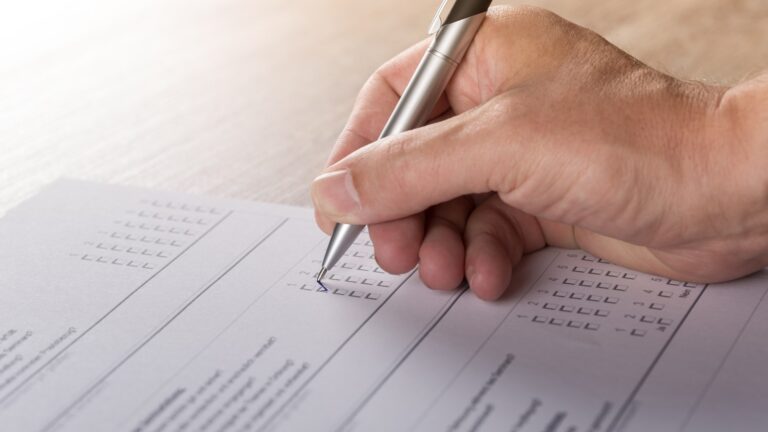A standard option available for researchers when conducting academic or market research is to do a survey. Where the research question concerns a study on society, it is very common for researchers to do nationwide or city-wide surveys. Most of the statistics derived or presented within the research are based on the quantitative data submitted in such surveys. However, are such statistics reliable and valid? This blog article will consider important points that must be assessed when assessing its reliability and validity.
The Importance of Surveys

In a business context, a survey could be carried out to gain product feedback or improve services. Survey results also can affect one’s promotion and the decision to invest in a business or a project. Surveys require individuals to fill out a form or answer a few questions to a recorder. Since answers come from individuals and are not based on information from other sources, it becomes a primary source for researchers that can be regarded as reliable and usable to make important findings or decisions. It offers a detailed and systematic way to view and analyse data, after which businesses, for example, can use it to improve their services or products. Two important aspects of any research, however, are reliability and validity. It is important to note that research is not regarded to be automatically valid just because it is reliable. The distinction between the two will therefore be made in the next section.
It is helpful to understand from the get-go, however, that a flawed dataset will lead to wrong conclusions. Hence, ideally, a survey needs to provide accurate and critical information. When creating a survey or even deriving conclusions, a person needs to consider the research objective, the target population, strategies, objectives and more.
What is Survey Reliability?
In ensuring that a survey is reliable, researchers need to be mindful of how they ask questions. For example, consider whether the question that is asked draws all readers to the same type of answer. What this means is not that everyone that fills it must have the same exact answer, but the need for everyone to interpret the question in the same manner. Hence, if the question leaves space for it to be interpreted in different ways, it cannot be regarded as valid. Reliability is also important when the results are compared to past internal surveys or benchmarks from external sources.
What is Survey Validity?
Reliability and Validity in Terms of Statistics

Statistical reliability and validity consider how well the numbers support the claims. In distinguishing reliability from validity, the former would note that a certain percentage of people selected ‘yes’ in a question given whereas the validity of that percentage would be based on the same of respondents. For instance, when researchers say 95 per cent of respondents, is it from a pool of 10 or 100? While there is no standard way to evaluable the claims of statistical validity, it may be helpful to look at the margin of error. This would require one to assess the study’s effect size or statistical significance.
Five Best Practices for Creating and Managing Surveys

The most common surveys used in the business world today are online surveys. Here are five things to keep in mind when creating one:
Keep it Short
Keep in mind; respondents are never obligated to fill out the survey. Hence, it ensures they make it to the end of the survey and submit it; it is recommended that the survey is kept short. According to statistics, participants are willing to only spend a maximum of ten minutes in completing a survey. This roughly amounts to answering only twenty questions at most. Additionally, being more precise in your questions would make it easier for respondents to fill out a form. Rather than requiring respondents to type in answers, where possible, provide options so that one only needs to click their answer. For example, many surveys use a numerical range to assess the quality of a service or product, with one being the most negative and ten being the most positive.
Keep Questions That Are Opinionated to the End
The survey structure should influence the respondent to keep filling out the form. Due to this, make sure that you do not include questions that require lengthy answers at the beginning. The same rule of thumb should be followed if personal or sensitive questions are asked. This is because respondents will only feel inclined to provide answers or be open to elaborating on their stance if they feel the survey is good and the organisation is trusted. In this sense, grouping questions according to the topic is also good. You should start with general questions before moving on to more detailed ones. As a result, participants will only be required to spend a little time towards the end of the survey.
Practice Ethical Practices
Multiple resources by research organisations and academia emphasise the need to follow ethical practices when making and carrying out a survey. A few of the most common practices include informing the participants what their data will be used for. This requires a brief explanation of who is conducting the survey, their contact information, and what the research is on. It is also a way to help reassure the respondents that they would not be shared with third parties. It would also be helpful to provide the respondent with the option of submitting a response anonymously or informing the respondents that their answers will only be used in such a manner. Where it is a social science research, participants must also be given the freedom to retract their responses at any time after completing the survey.
Use Easy Language and Design Surveys to be Attractive
Keep in mind that a survey is meant to be answered by the general public. As a result, the language throughout the document should be reader-friendly and should be something your target audience can easily understand. Avoid complex wording that leaves space for misinterpretation. If you live in a country with multiple languages offering one the option to answer it in a preferred language, it provides more incentive for a respondent to answer as it gives them a space to be heard. The overall overlook of your survey is also important when approaching people to fill it. Take advantage of the numerous colours, fonts and styled templates a variety of survey buildings offer. Break the survey into sections so that instead of looking at a long, endless form, the competition of one section requires you to move on to another.
Show the Respondents Their Answers Matter
Where the survey form collects an email address, for instance, it provides a way for companies to show their answers matter. For example, after a few months, a company may email everyone the overall changes made. This demonstrates that any form of response provided was read and taken seriously. Hence, common concerns raised would be addressed. This would drastically help a business build customer loyalty and incentivise consumers to provide positive and negative feedback instead of only filling out a survey to comment on the negative. Following up on negative experiences is also another way to guarantee that consumers leave a good impression of you as a business. In essence, simply having a survey is ineffective if the concerns raised are not addressed.





